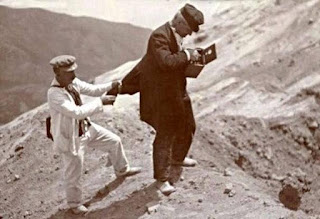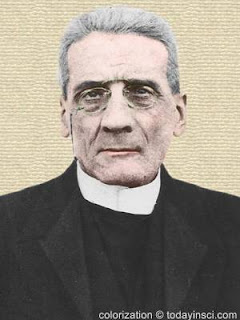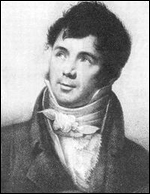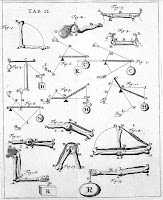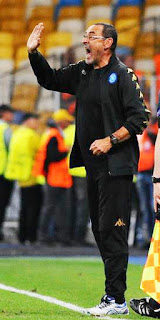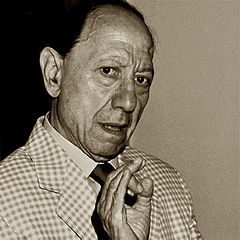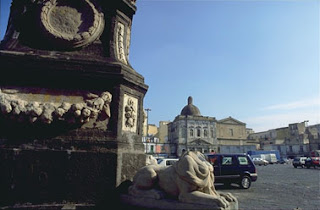Teenager who gave his life for his city
 |
| The young partisan Filippo Illuminato, killed at the age of 13 |
He was among more than 300 Italians killed in an uprising known as the Quattro giornate di Napoli - the Four Days of Naples - which successfully liberated the city from occupying Nazi forces ahead of the arrival of the first Allied forces in the city on 1 October.
Illuminato’s memory has been marked in a number of ways in the southern Italian city, honoured because he was only 13 years old when he was killed by German gunfire in a street battle in the famous Piazza Trieste e Trento, just a few steps from the Royal Palace. His last act had been to blow up a German armoured car.
Born into a poor family, Illuminato was working as an apprentice mechanic when he decided to join the uprising, which was sparked by a brutal crackdown imposed by the Nazis in response to the Italian government’s decision to surrender to the Allies, confirmed in the signing of the Armistice of Cassabile on 3 September on the island of Sicily.
The German forces, which had numbered 20,000, had responded to the news by banning all assemblies and introducing a curfew. Thousands of Italian soldiers and citizens were rounded up and deported, bound for labour camps in the north of the country.
Citizens who remained in the city were warned that any insurrection would be punished by execution and the destruction of the homes of each individual offender. The wounding or killing of any German soldier would be avenged with the deaths of 100 Neapolitans. Word spread that the Germans had been instructed to "reduce Naples to cinders and mud" before they retreated from the Allied invasion.
 |
| Neapolitans welcome the arrival of Allied troops in the city following the four-day uprising |
Illuminato had by this stage taken up arms with other members of his family and friends. The German forces knew they had a full-scale insurrection on their hands and street battles broke out as the resistance fighters were sought out. It was during one such battle that Illuminato was killed - but only after an act of personal bravery that would posthumously be recognised by the awarding of the Gold Medal of Military Valour, Italy's highest award for gallantry.
Fighting with a group of partisans in the heart of the city, he became separated as other men sought cover from a German patrol. Yet he courageously advanced on a German armoured car that was moving from Piazza Trieste e Trento into Via Toledo, which was then known as Via Roma.
 |
| The main post office in Naples was destroyed by the German occupiers before they withdrew |
Over the following two days, the Germans began to withdraw, aware that the advancing Allied forces were only a few kilometres away to the south. By the time American and British soldiers arrived, no Nazis remained in the city.
Although there were three times as many deaths among partisans and civilians as there were among the German forces, the uprising was hailed as a victory because it played a part in the decision of the Nazi command not to mount a defence of Naples against the invading Allies, and thwarted Hitler’s instructions to his army to leave the city in ruins in their wake.
Nazi troops did torch the State Archives of Naples, which destroyed many historical documents, and blew up the main post office, but quit without bringing about the wholesale destruction Hitler had wanted.
Illuminato became a symbol of the Four Days. His memory is preserved in the city in a number of ways, including a street name - the Via Filippo Illuminato in the Fuorigrotta district - and a high school in the Mugnano district.
| The Piazza Trieste e Trento, where Filippo Illuminato was gunned down in 1943, as it looks today |
The Piazza Trieste e Trento is a much smaller space than the vast Piazza del Plebiscito it adjoins, but is nonetheless an important square at the convergence of the Via Toledo, Via Chiaia and the Via San Carlo. Around its perimeter can be found the Teatro San Carlo, a wing of the Royal Palace, the Palazzo Zapata, the Galleria Umberto I and the Caffè Gambrinus. The square acquired its current name in 1919 in celebration of the Italian victory in the First World War.
 |
| The Via Toledo in Naples - known as Via Roma until 1980 - is one of the main commercial streets in the centre of the city |
Via Toledo is a busy street in Naples, linking Piazza Dante with Piazza Trieste e Trento. One of the most important shopping streets in the city, it is almost 1.2 km (0.75 miles) long. Created by Spanish viceroy Pedro Álvarez de Toledo, 2nd Marquis of Villafranca in 1536, it was designed by Ferdinando Manlio, an Italian architect. It was called Via Roma between 1870 to 1980 to celebrate the Italian unification. The Metro station Toledo, which can also be found on the street, is one of the city’s more unlikely must-see places. One of a number of so-called ‘art stations’ on the line linking Piazza Garibaldi and Piscinola, Toledo is famous for its breathtaking escalator descent through a vast mosaic by the Spanish architect Oscar Tusquets Blanca known as the Crater de Luz – the crater of light – which creates the impression of daylight streaming into a volcanic crater.
Home




